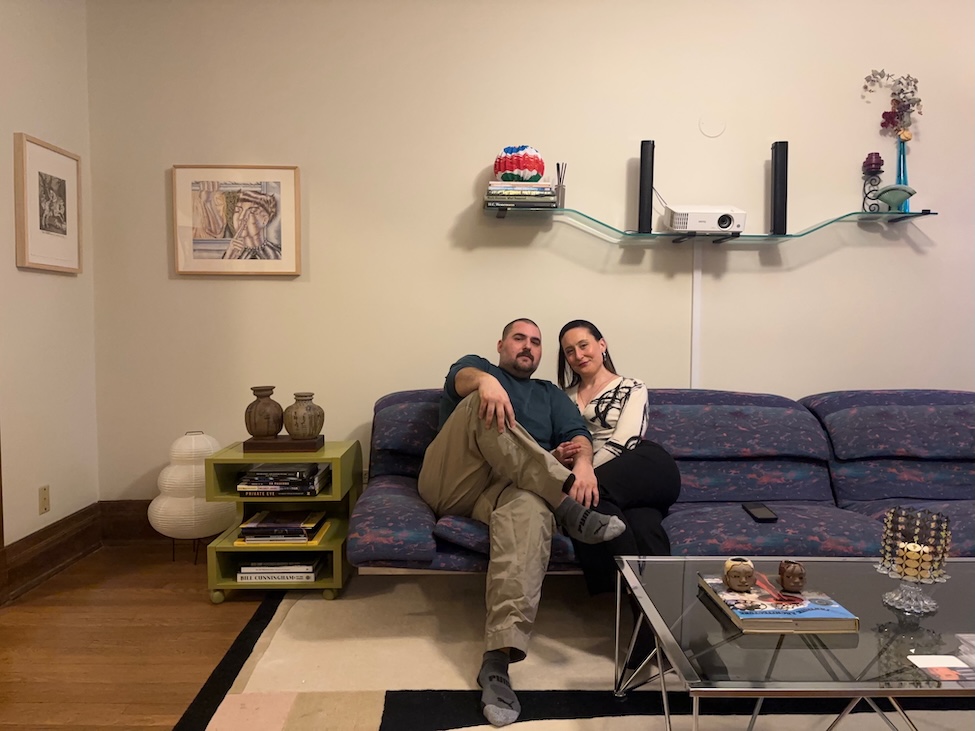Solveig Øvstebø at the Renaissance Society

BY KEVIN NANCE

When Solveig Øvstebø first received a phone call from The Renaissance Society in Chicago about the possibility of her becoming the institution’s new executive director—replacing Susanne Ghez, who was retiring after 40 years in the position—the timing could hardly have been worse.
For one thing, Øvstebø had recently accepted a new term as director of Norway’s Bergen Kunsthall, which she had led for nearly a decade and which was expanding with additional gallery space and a new office for her. For another, she was three days away from giving birth to her daughter, Ella. As she recalls now with comic understatement, “It was not a time when I was looking for a new job.”
But the Ren, as the renowned art space on the University of Chicago campus is known, was persistent. Six weeks after the first call, a second one came. “We had a very short list of people we wanted for the job, and Solveig was on the top of that list,” says Canice Prendergast, the member of the Ren’s search committee who took the lead in communicating with Øvstebø. “It’s a very difficult job to fill, because we need to have one of the best curators of avant-garde art in the world who also happens to be very good at running an institution like ours. It’s rare to find someone with both qualities; the group of people who do is very, very small. The new director also has very big shoes to fill, since Susanne essentially created the Renaissance Society and turned it into a world-class institution. But given Solveig’s track record, we thought she was the ideal person to fill those shoes.”
This time around, Øvstebø found herself intrigued. She knew of the Renaissance Society’s high regard on the international art scene, having hosted some of the same artists whose work had been shown at the Ren. The two organizations’ structure and practice were similar; they were both non-collecting institutions focused on temporary exhibitions of cutting-edge art. Most important, the Ren’s search committee emphasized that she could concentrate on presenting art exhibitions largely free from the complicating factors—audience and sponsor expectations, commercial and market forces, political considerations—that plague her peers around the world.
“Sometimes those factors can become so important for an institution that there’s not enough space left for what’s really interesting to me, which is the art production and the communication with the artists,” she says in an interview at her office, where she took over from Ghez last fall. “They convinced me that this is a place where art comes first.”
In her new job, Øvstebø says she plans to increase the Ren’s profile locally by expanding its outreach efforts, which could include a satellite gallery to supplement the institution’s smallish 3,200-square-foot exhibition space in Hyde Park. (She has no plans, however, to support a move away from the University of Chicago campus in search of larger permanent quarters. “That’s not on my to-do list,” she says, “and I have a big to-do list.”) She also wants to publish exhibition catalogs and other publications on a larger scale and within the timeframe of the exhibition in question (as opposed to the current practice of publishing some catalogs after-the-fact).
In addition to her duties overseeing the Ren’s administrative operations and strategy, Øvstebø is also its chief curator. Her first outings in Chicago begin this month with a show of new work by the German artist Nora Schultz (January 12-February 23), followed by an exhibition by the Canadian artist Christina Mackie (April 27-June 29). These will be the earliest demonstrations of Øvstebø’s vision of the curatorial role as closely tied to artistic production in the early stages of the creative process. Last year, for example, she spent four days in Schultz’s empty studio in Berlin in conversation with the artist, acting as a sounding board and filter for her ideas.
“This institution is not just a passive space where we show artworks that have been seen elsewhere,” Øvstebø explains. “Instead of picking artworks that have been shown in museums or biennials or galleries, I am asking the artists to present works that they are producing with us, that are completely new, that maybe are based on ideas that the artist hasn’t been able to try out yet. This is a place where they can experiment with new ideas, and so in dialogue with us, new works can come about.”
Although it was not a factor in her decision to accept the new job, there was an additional circumstance that made Øvstebø’s move to Chicago seem, in hindsight, somehow inevitable: She was born here. In 1972, her parents moved to the Windy City, where her father, a professor of theology, served a two-year stint as pastor of the Norwegian Memorial Church, also known as the Minnekirken, a Norwegian-speaking Lutheran congregation in Logan Square. The family went back to Norway when their new daughter was 18 months old, never to return.
“It’s a strange thing,” muses Øvstebø, 40. “My daughter is now the same age I was when we lived in Chicago the first time, and I am now the age my mother was when we were here. And because I was born here, I am a U.S. citizen, but never had an American passport. I thought it would be hard to get one, but I went to the embassy and brought my birth certificate, and they gave me my passport, just like that.” She smiles. “And here I am.”






